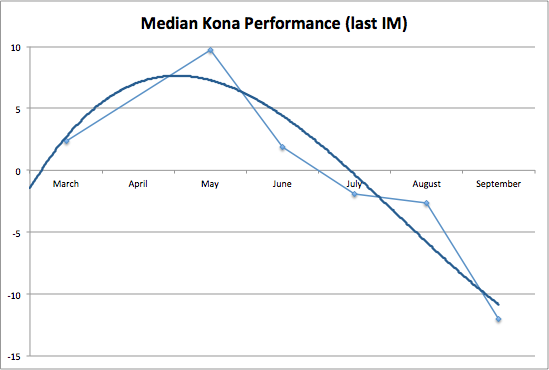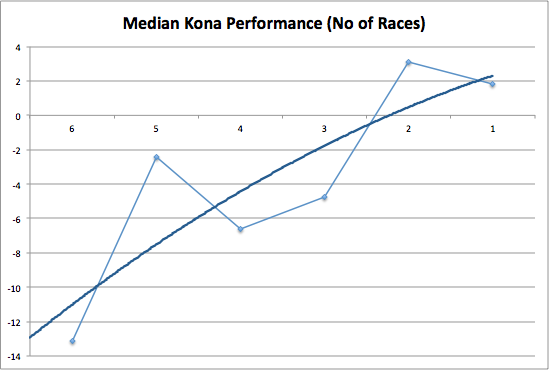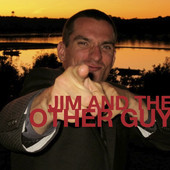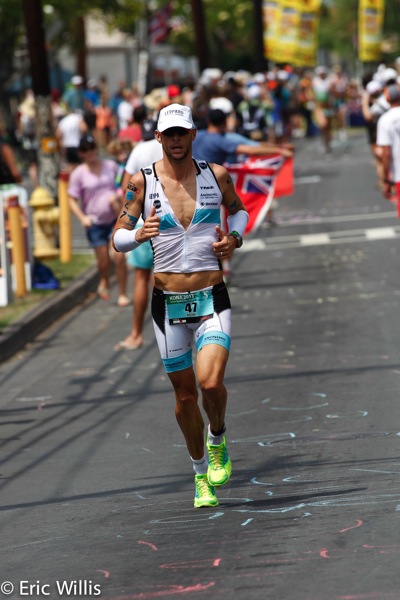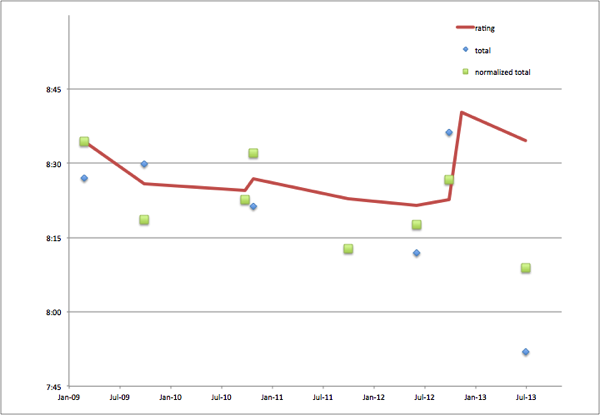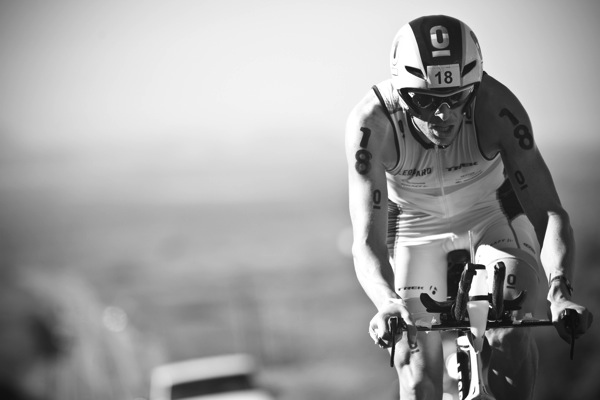Ironman Arizona 2013 – Analyzing Results
Race Conditions
Everything in Arizona was a little bit quicker than what is typical this year. Most of the quick times originate from a very fast bike (adjustment of 19:03, compared to a rating of less than 10 minutes). The impact of the new run course was not very big (run adjustment of 4:12 with a run rating of 1:54), so we have to assume that the conditions were just very good for a quick bike ride.
Male Race Results
Jordan Rapp quickly took control of the race on the bike, posting a new bike record (bettering Andy Starykowicz’ time from last year). It was quite unusual for his usual race plan to be the one being hunted down – but Victor Del Corral did just that, posting another fantastic marathon only two weeks after his 2:37 from Florida. Jens Petersen-Bach rounded out the podium.
| Rank | Name | Nation | Swim | Bike | Run | Time | Diff to expected |
| 1 | Victor Del Corral | ESP | 00:54:03 | 04:20:11 | 02:43:58 | 08:02:00 | -05:54 |
| 2 | Jordan Rapp | USA | 00:52:45 | 04:14:44 | 02:54:54 | 08:06:13 | -03:38 |
| 3 | Jens Petersen-Bach | DEN | 00:52:10 | 04:22:23 | 02:49:39 | 08:07:53 | -10:34 |
| 4 | Denis Chevrot | FRA | 00:48:41 | 04:26:59 | 02:49:47 | 08:09:04 | -04:29 |
| 5 | Pedro Gomes | POR | 00:48:49 | 04:21:19 | 02:57:57 | 08:11:42 | -14:04 |
| 6 | Trevor Wurtele | CAN | 00:53:49 | 04:19:53 | 02:54:47 | 08:12:34 | -33:27 |
| 7 | Marc Duelsen | GER | 00:53:01 | 04:21:39 | 02:56:12 | 08:14:29 | n/a |
| 8 | Christian Brader | GER | 00:56:49 | 04:25:22 | 02:52:38 | 08:18:44 | -25:03 |
| 9 | Matthew Russell | USA | 00:59:19 | 04:20:01 | 02:55:53 | 08:19:10 | -15:54 |
| 10 | Johann Ackermann | GER | 00:48:33 | 04:28:31 | 03:01:38 | 08:22:30 | n/a |
| 11 | Jonathan Shearon | USA | 00:53:52 | 04:25:32 | 03:01:01 | 08:24:23 | -20:24 |
| 12 | Thomas Gerlach | USA | 00:53:49 | 04:20:35 | 03:07:01 | 08:25:01 | -15:11 |
| 13 | Ritchie Nicholls | GBR | 00:48:47 | 04:39:37 | 02:54:01 | 08:25:49 | n/a |
| 14 | Dan Mcintosh | USA | 00:52:47 | 04:27:01 | 03:04:15 | 08:28:13 | -29:08 |
| 15 | Nicholas Ward Munoz | GBR | 00:54:04 | 04:36:11 | 02:53:35 | 08:28:21 | -19:50 |
| 16 | Nick Baldwin | SEY | 00:53:41 | 04:28:26 | 03:03:46 | 08:29:57 | 01:35 |
| 17 | Jared Milam | USA | 00:53:46 | 04:33:29 | 02:59:08 | 08:30:22 | -27:00 |
| 18 | Matt Hanson | USA | 00:56:29 | 04:39:13 | 02:51:11 | 08:30:29 | n/a |
| 19 | Joe Umphenour | USA | 00:48:32 | 04:31:49 | 03:07:50 | 08:33:04 | 04:06 |
| 20 | Andrew Russell | CAN | 00:48:39 | 04:28:38 | 03:13:02 | 08:33:50 | -05:13 |
| 21 | Jozsef Major | HUN | 00:56:59 | 04:22:45 | 03:12:51 | 08:36:59 | 08:43 |
| 22 | Ryan Cain | CAN | 00:55:34 | 04:37:06 | 03:02:05 | 08:38:42 | -23:51 |
| 23 | Matt Chrabot | USA | 00:48:36 | 04:30:42 | 03:16:51 | 08:39:50 | n/a |
| 24 | Patrick Wheeler | USA | 00:56:54 | 04:42:28 | 02:58:05 | 08:43:09 | -01:28 |
| 25 | Matty Reed | USA | 00:48:36 | 04:33:16 | 03:21:34 | 08:47:16 | 19:30 |
| 26 | Raymond Botelho | USA | 00:54:02 | 04:27:26 | 03:21:08 | 08:47:31 | -42:54 |
| 27 | Anthony Toth | CAN | 00:57:41 | 04:43:37 | 03:04:28 | 08:51:13 | -17:33 |
| 28 | Jordan Bryden | CAN | 00:49:05 | 04:53:06 | 03:10:11 | 08:56:27 | -26:29 |
| 29 | Jozef Vrabel | SVK | 00:53:44 | 04:42:44 | 03:25:13 | 09:05:36 | -19:38 |
| 30 | Luke Way | CAN | 00:59:08 | 04:41:47 | 03:21:34 | 09:07:44 | -10:22 |
| 31 | Stephen Kilshaw | CAN | 00:56:55 | 04:39:19 | 03:29:16 | 09:09:19 | -06:51 |
| 32 | Brendan Naef | CAN | 00:56:59 | 04:52:52 | 03:19:42 | 09:14:26 | -52:00 |
| 33 | Pierre-Yves Facomprez | FRA | 01:02:51 | 04:48:19 | 03:25:05 | 09:21:18 | n/a |
| 34 | Lewis Elliot | USA | 00:54:15 | 04:41:53 | 03:41:08 | 09:21:42 | 08:20 |
| 35 | Raul Furtado | BRA | 00:54:05 | 04:42:19 | 03:43:46 | 09:23:58 | 36:26 |
| 36 | Erich Wegscheider | GBR | 00:56:56 | 05:07:56 | 03:21:25 | 09:32:42 | 21:20 |
| 37 | Jon Woods | NZL | 00:58:35 | 04:47:16 | 03:44:41 | 09:34:36 | 05:51 |
| 38 | Robbie Wade | IRL | 00:58:41 | 04:49:41 | 03:43:07 | 09:35:29 | n/a |
| 39 | Heinrich Sickl | AUT | 00:59:15 | 04:42:29 | 03:54:31 | 09:40:24 | 11:40 |
| 40 | Jim Lubinski | USA | 01:05:47 | 04:57:56 | 03:43:54 | 09:51:32 | 31:09 |
| 41 | Timo Gronlund | USA | 01:00:24 | 05:09:38 | 03:37:06 | 09:52:25 | n/a |
| 42 | Patrick Schuster | USA | 01:06:23 | 04:58:26 | 03:44:13 | 09:55:57 | 40:12 |
| 43 | Richard Wygand | BRA | 01:06:54 | 04:59:16 | 03:45:19 | 09:57:44 | -30:04 |
| 44 | Jimi Minnema | USA | 01:03:42 | 05:07:18 | 03:44:34 | 10:00:55 | n/a |
| 45 | Josh Seifarth | CAN | 00:53:41 | 04:50:34 | 04:16:16 | 10:05:33 | n/a |
| 46 | Damian Hill | 01:01:10 | 05:32:28 | 03:35:43 | 10:16:27 | n/a | |
| 47 | Jason Watson | USA | 00:59:42 | 05:18:00 | 04:01:46 | 10:24:55 | -12:29 |
| 48 | Jeff Tarkowski | USA | 00:58:58 | 05:09:01 | 05:42:20 | 11:56:35 | n/a |
Female Race Results
The race on the women’s side mirrored the men’s: Meredith Kessler was leading after the bike. She also posted a new bike record (improving on Chrissie’s time), but only held the record for a few minutes as Michelle Vesterby was another 2 1/2 minutes quicker. (It was a quick day, Sarah Piampiano was also under the old record.) Both Meredith and Michelle didn’t have a bad marathon, but it was quickly apparent that Julia Gajer had the best running legs and would probably run them down in the last miles. Julia posted the best run split and won by almost three minutes over Meredith who held off Michelle.
| Rank | Name | Nation | Swim | Bike | Run | Time | Diff to expected |
| 1 | Julia Gajer | GER | 00:53:24 | 04:51:46 | 03:02:02 | 08:52:49 | -14:40 |
| 2 | Meredith Kessler | USA | 00:50:14 | 04:45:33 | 03:16:05 | 08:55:47 | -10:58 |
| 3 | Michelle Vesterby | DEN | 00:53:30 | 04:42:57 | 03:16:43 | 08:57:24 | -09:44 |
| 4 | Sarah Piampiano | USA | 01:02:48 | 04:46:23 | 03:12:49 | 09:05:57 | -21:26 |
| 5 | Asa Lundström | SWE | 00:59:46 | 04:55:30 | 03:12:47 | 09:12:20 | -09:19 |
| 6 | Eimear Mullan | IRL | 00:59:43 | 05:04:16 | 03:04:42 | 09:13:13 | -18:12 |
| 7 | Lisa Ribes | USA | 01:06:08 | 04:56:54 | 03:05:42 | 09:13:32 | -08:36 |
| 8 | Uli Bromme | USA | 01:02:50 | 04:52:28 | 03:15:13 | 09:15:00 | -19:35 |
| 9 | Beth Shutt | USA | 01:02:37 | 05:01:55 | 03:06:39 | 09:15:38 | -29:05 |
| 10 | Ariane Monticeli | BRA | 01:02:58 | 05:02:54 | 03:11:37 | 09:21:53 | -25:44 |
| 11 | Diana Riesler | GER | 00:59:56 | 04:55:16 | 03:25:46 | 09:25:05 | 10:40 |
| 12 | Jessica Meyers | USA | 00:59:38 | 05:04:40 | 03:25:21 | 09:33:44 | n/a |
| 13 | Miranda Tomenson | CAN | 00:57:27 | 05:01:20 | 03:35:56 | 09:38:52 | n/a |
| 14 | Kristin Lie | NOR | 01:15:12 | 04:57:24 | 03:23:45 | 09:41:04 | -01:07 |
| 15 | Christine Fletcher | CAN | 00:59:33 | 05:03:53 | 03:36:16 | 09:45:21 | -11:01 |
| 16 | Trish Deim | USA | 01:05:35 | 04:58:04 | 03:37:30 | 09:45:58 | -16:39 |
| 17 | Tine Holst | DEN | 01:08:38 | 04:58:14 | 03:34:43 | 09:46:26 | -03:12 |
| 18 | Heleen Bij De Vaate | NED | 01:07:39 | 05:09:15 | 03:26:23 | 09:47:14 | 17:13 |
| 19 | Kate Bruck | USA | 01:06:21 | 05:17:37 | 03:20:17 | 09:49:41 | n/a |
| 20 | Erin Young | USA | 00:59:40 | 05:11:48 | 03:34:27 | 09:53:42 | -15:00 |
| 21 | Kristyn Tobey | BMU | 01:07:37 | 05:05:59 | 03:39:00 | 09:56:41 | -13:02 |
| 22 | Steffi Steinberg | GER | 01:08:47 | 05:13:48 | 03:31:42 | 09:58:45 | -08:12 |
| 23 | Amy Forshaw | GBR | 01:06:37 | 05:10:31 | 03:38:27 | 10:01:18 | -08:57 |
| 24 | Katja Konschak | GER | 00:53:27 | 05:09:56 | 04:08:33 | 10:17:31 | 50:05 |
| 25 | Lisa Mueller | USA | 01:05:34 | 05:13:44 | 03:53:15 | 10:18:12 | n/a |
| 26 | Morgan Chaffin | USA | 00:59:51 | 05:18:44 | 04:38:06 | 11:03:25 | n/a |
| 27 | Sarah Baker | CAN | 01:04:47 | 05:25:23 | 04:58:27 | 11:32:38 | 1:14:19 |
